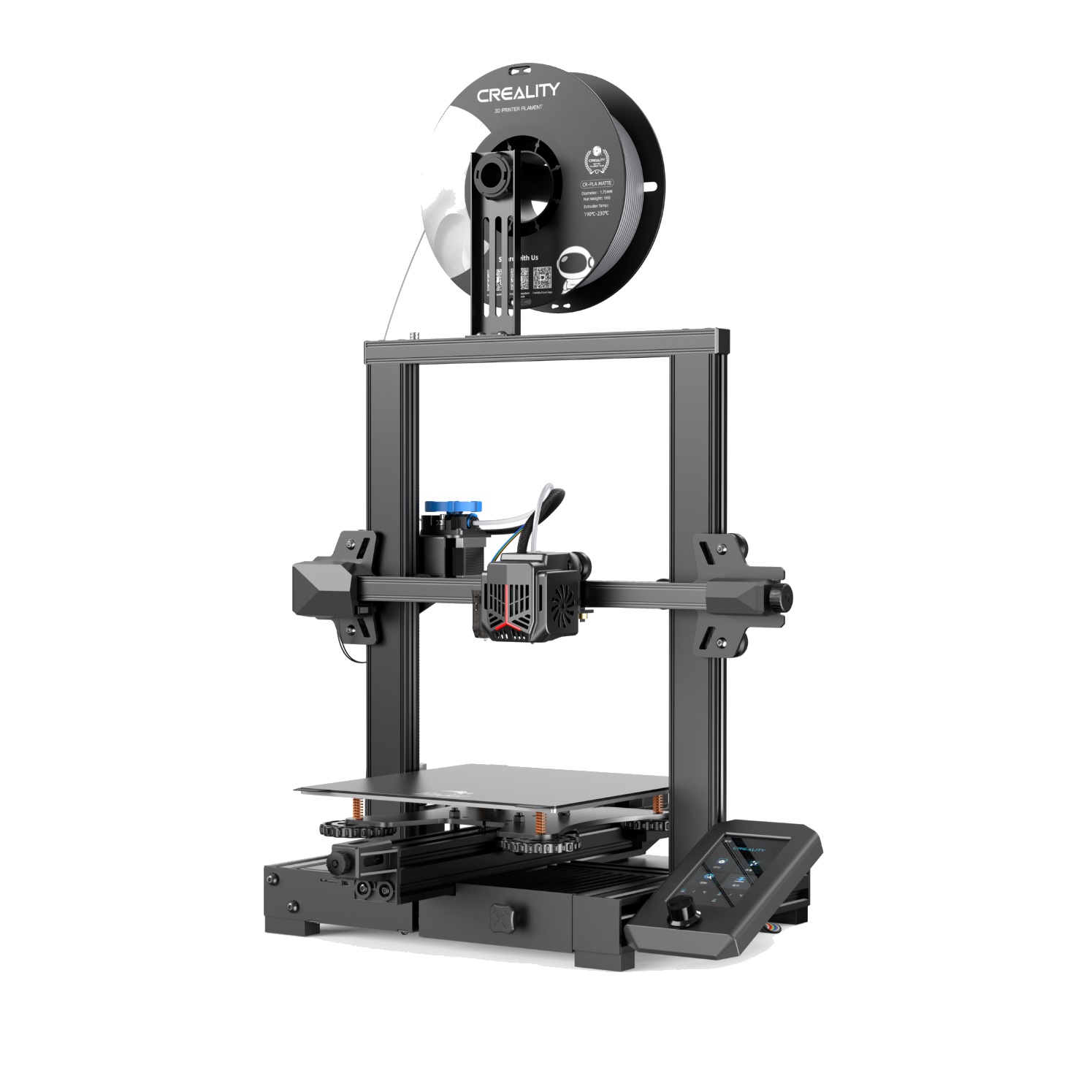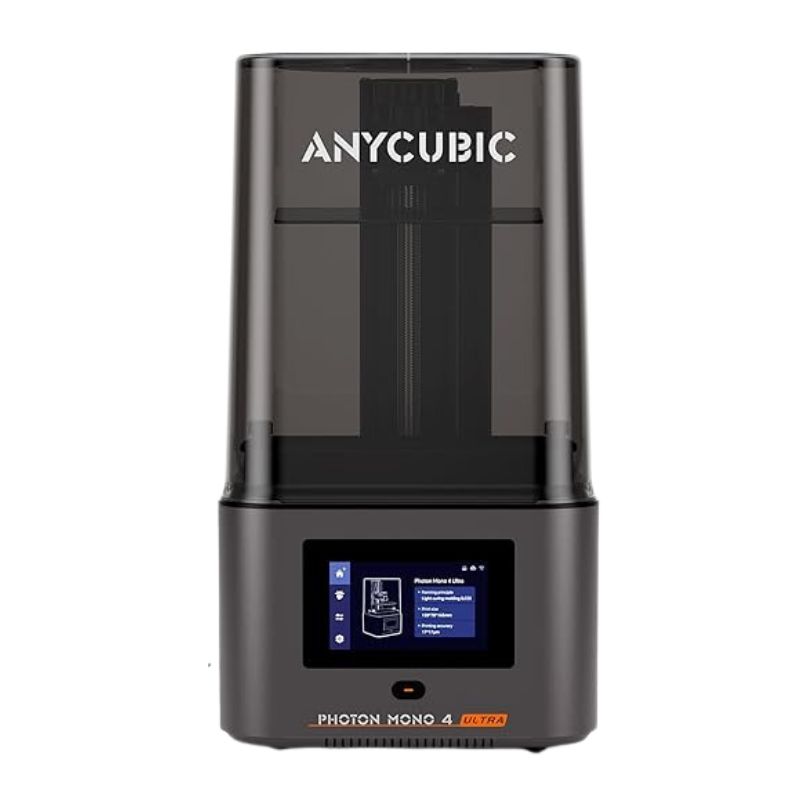Compare Ender 3 V2 Neo vs Photo Mono 4 Ultra
Comparison between the best 3D printers
Choose the best 3D printer at the best price. The cheapest 3D printers are here.
Buy a 3D printer here with 3D Fila.
 |
 |
|
| Model | Ender 3 V2 Neo[BUY Ender 3 V2 Neo] |
Photo Mono 4 Ultra[BUY Photo Mono 4 Ultra] |
| Printing Material | Filament | Resin |
| Buy Filament for Creality 3D Ender 3 V2 Neo | Buy Resin forAnycubic Photo Mono 4 Ultra | |
| Estimated price | $310,00 | $250,00 |
| Manufacturer | Creality 3D | Anycubic |
| Release Year | 2022 | 2024 |
| Print Volume [mm] | 220x220x250 | 153x87x165 |
| Printer Size [mm] | 438x424x472 | 231x236x430 |
| Weight [kg] | 9,8 | 5 |
| Power Loss Recovery | YES | NO |
| Maximum Resolution [mm] | 0,1 | 0,01 |
| Processor | 4.2.2 mainboard | |
| Display | Display touchscreen 4,3'' | Touchscreen 4.3'' |
| Power Supply | ||
| Connectivity | SD / USB | USB |
| Operating systems | Windows, Mac, Linux | Windows, Mac |
| Date of registration in the system | 2022-12-09 | 2024-12-13 |
| Release date | 2022 | 2024 |
| Extra features | The Ender 3 V2 Neo printer stands out for its automatic bed leveling with the CR Touch system, ensuring high-quality initial layers. It features an all-metal Bowden extruder for increased durability and improved filament handling. Its flexible, PC-coated magnetic build plate makes it easy to remove prints and is durable and easy to clean. It also includes a new user interface with model preview and an updated gantry design. The Ender 3 V2 Neo maintains the same build volume and temperatures as the previous version, supporting popular filaments such as PLA and ABS. It features a quiet 32-bit mainboard and additional features such as a filament sensor, print recovery, simple 3-step assembly, an integrated toolbox, and belt tensioners. | The Anycubic Photon Mono 4 Ultra features 10K resolution (9024x5120) with 17x17um pixels and high light uniformity (>=90%) enabled by the COB system with Fresnel lens and uniformity algorithm. It offers a build volume of 153.4x87x165 mm and speeds up to 120 mm/h with high-performance resin. It includes assisted leveling, built-in Wi-Fi, and a redesigned platform for better adhesion and easy model removal. Additionally, it has a print resumption function after power outages, optimizing time and materials. |
| Support for multiple colors and materials (AMS and CFS) | NO | NO |
Notes * |
||
| Cost-benefit | 7 / 10 | 8 / 10 |
| Hardware | 2.8 / 10 | 6.3 / 10 |
| Tela | . | . |
| Print volume | 3 / 10 | 3 / 10 |
| Performance | 0 / 10 | 9 / 10 |
| [BUY Ender 3 V2 Neo] | [BUY Photo Mono 4 Ultra] |
Conclusion |
| In evaluating the Ender 3 V2 Neo and the Anycubic Photo Mono 4 Ultra, both printers present distinct advantages tailored to different user needs. The Ender 3 V2 Neo, while slightly more expensive, offers a larger print volume and is best suited for users who prioritize versatility in filament types and sizes. Its features like automatic bed leveling, a solid all-metal design, and a user-friendly touchscreen interface enhance the overall printing experience, making it a reliable choice for traditional FDM printing. The printer's specifications and additional features suggest a robust and durable machine ideal for hobbyists and those looking for an entry-point into more complex designs. On the other hand, the Photo Mono 4 Ultra excels in precision with its 10K resolution and impressive print speed, making it the preferable option for users focused on high-detail resin prints. Despite its smaller build volume, the enhancements in light uniformity and print adhesion cater well to detailed and intricate models. Additionally, features like built-in Wi-Fi and assisted leveling streamline the user experience, especially for those engaging in high-quality prototyping or detailed artwork. Ultimately, the choice between these two printers depends largely on the user's printing goals. If larger prints and material versatility are the priority, the Ender 3 V2 Neo stands out. However, for those seeking exceptional detail in smaller prints, the Anycubic Photo Mono 4 Ultra represents a compelling option. In terms of cost-benefit, both models perform well, with the Anycubic showing a slightly stronger value proposition for users focused on high-resolution applications. |

